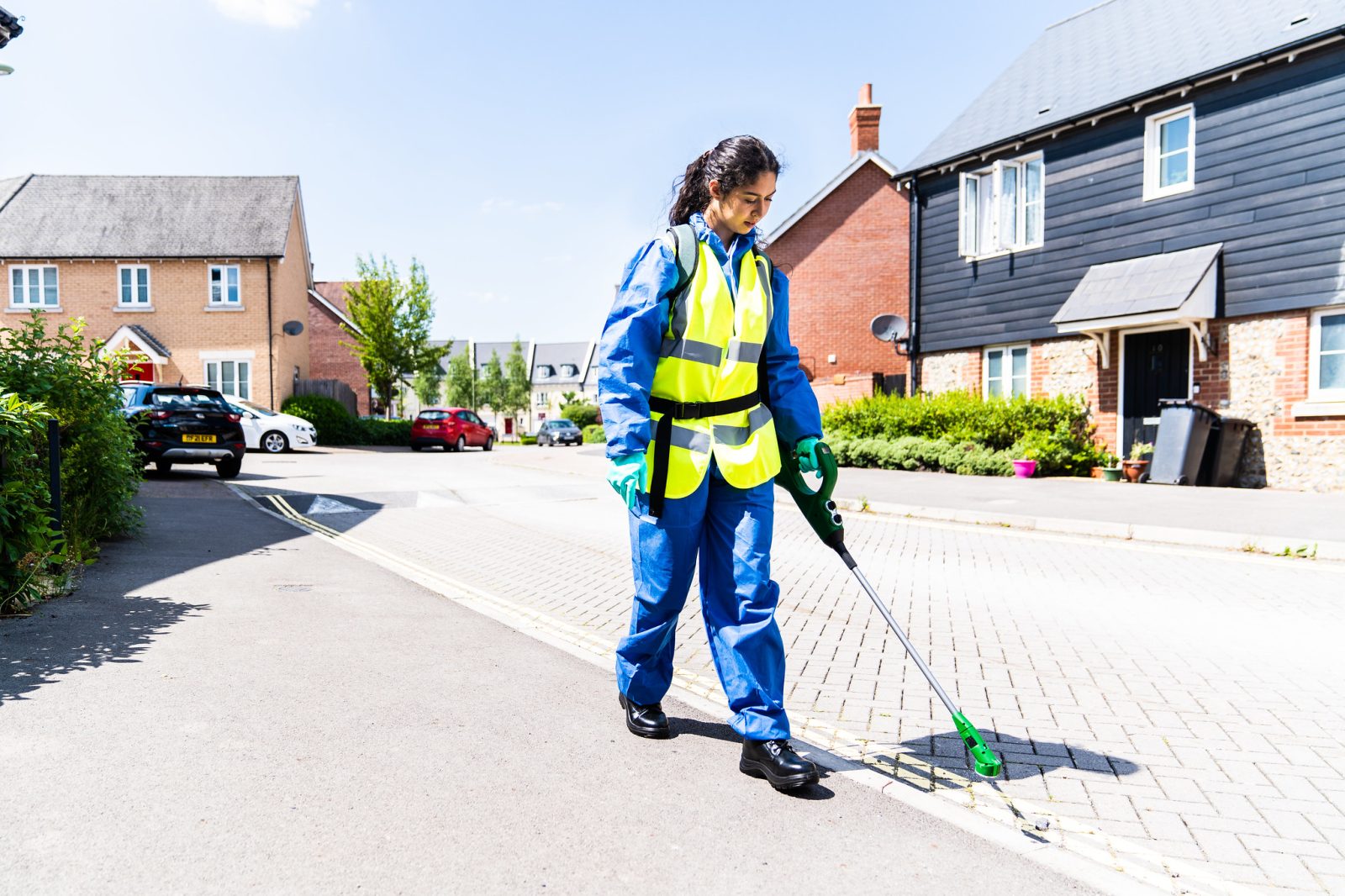How to tackle street and road weeds
We all know that weeds can grow and reproduce rapidly, especially if the weather is warm and damp. If they’re not kept under control, weeds can quickly wreak havoc in local amenity areas and create all sorts of challenges for councils and highways authorities.
Why are street and road weeds a problem?
Weeds are a problem on streets and roads for several reasons, including:
- Appearance – Weeds littering the streets and roads can make them look unsightly, but they can also trap litter and other dirt deterring from the overall attractiveness of an area.
- Safety – Weeds can affect the safety of our roads and streets, by:
- Causing trip hazards – Weeds growing around pavements and kerbs can be trip hazards for the public but can also cause broken or uneven slabs, which can also be trip hazards.
- Obscure traffic signs – Weeds can interfere with visibility for road users by obscuring traffic signs and other signals.
- Prevent drainage – Weeds around kerbs and in drains can affect the way water is drained from the streets and roads, by slowing drainage or preventing it altogether. This can cause flooding which, in turn, increases the risk of accidents for pedestrians, cyclists and drivers.
- Expense – Weeds can destroy pavements, force kerbs apart, crack walls and block drains resulting in hefty maintenance costs for local authorities.
How can councils control street and road weeds?
The best way for councils to tackle weed growth is by creating a borough-wide weed treatment program as well as an integrated weed control programme, which includes sweeping and regular maintenance of surfaces, alongside herbicide control. In recent years, local authorities have been looking for alternative methods of controlling weeds that reduce the amount of glyphosate applied, while still working within limited budgets and resources.
Non-herbicide approaches can be costly and can have significant environmental and safety drawbacks associated with them. High diesel emissions and excessive water use are just two examples of such drawbacks. One of the best ways for councils to control weed growth and damage caused by weeds is by carefully selecting the most appropriate herbicides and application technique.
How can Nomix Total Droplet Control and Nomix Dual help to control street and road weeds?
Here at Nomix, we’ve drawn on many decades of expertise to provide local authorities with a range of solutions to support their weed control efforts, whilst at the same time helping them to reduce the volume of glyphosate used.
Our Nomix Total Droplet Control (TDC) herbicide application system offers outstanding safety for operators, bystanders and the environment, with no need to mix the products and zero emissions at the point of use. Nomix TDC can be used with our unique Nomix Dual product, the only residual herbicide approved for use on hard surface areas – including streets and pavements – and can keep weeds at bay for 4-6 months.
Using Nomix Dual with our Nomix TDC applicator helps to keep streets, roads and pavements safe and clear of weeds. These solutions also help to reduce the amount of herbicide required, whilst also reducing glyphosate use by up to 70%. There are significant user benefits too, with the lightweight Nomix TDC herbicide packs reducing manual handling when compared to conventional knapsacks.
Get in touch
If you’d like to find out more about Nomix Dual or our Nomix TDC herbicide application system, please get in touch and one of our friendly team members will be more than happy to help and answer any questions you have.
